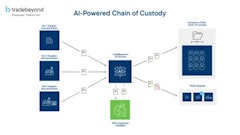Medical foods are often confused with dietary supplements and functional foods that are neither targeted for specific disease conditions nor require medical supervision for product administration. While regulations in the U.S. and Europe clearly defined medical foods, those in other parts of the world are still under development. Recently, however, medical foods have begun to be regulated in Australia and New Zealand through Standard 2.9.5 of the Food Standards Code, urging other markets to improve their regulatory environment. With strong regulatory efforts under way, the Asia-Pacific region holds huge untapped market potential. To penetrate the market, participants must have a robust R&D set-up, invest in regional product differentiation, and focus on product innovation.
New analysis from Frost & Sullivan, “Global Medical Foods Market,” finds that the global medical foods market earned revenues of $9.36 billion in 2013 and estimates this to reach $13.34 billion in 2018. The study covers the application segments of critical care and trauma as well as oncology, diabetes, metabolic, digestive, immune, cardio-vascular, musculo-skeletal, and cognitive and CNS health.
For complimentary access to more information on this research, visit: http://corpcom.frost.com/forms/APAC_PR_DJeremiah_P851-39_10Nov14.
Growing healthcare expenditure and rising public health consciousness are driving the global medical foods market. With life expectancy, along with disease incidence rates also going up, the cohort of people receiving medical attention is expanding, boosting the volume base of the medical foods market.
"Interest in clinical nutrition as a means to treat diseases is gaining pace, fuelling the demand for medical foods in many countries," said Frost & Sullivan Chemicals, Materials & Food Senior Research Analyst Aparna Balasubramanian. "While diabetes, oncology and metabolic health are currently the most significant application areas, immune and cardiovascular health are promising segments for future growth."
However, drug-based therapies are still the dominant form of disease treatment and supplementing them with medical nutrition is yet to gain prominence in many parts of the world. Low medical adherence among patients is also a challenge. In particular, medical foods for non-fatal diseases such as diabetes are ignored by many sections of the population. Comparatively, compliance in the usage of medical foods for life-threatening conditions such as cancer is higher.
Another challenge for market participants in many developing countries other than the Philippines and Vietnam is physician's sub-optimal awareness on medical nutrition's ability to accelerate recovery or augment the well-being of patients. Once manufacturers start focusing on building physician and end-user awareness on medical foods, the market will inch towards its true value.
"The global medical foods space is well-consolidated, with the top few participants holding a majority of the market share partly due to the prevalence of regional participation in the US, Europe and Asia," noted Balasubramanian. "The leading medical food manufacturers have been engaging in R&D, which is driving advances in food technologies and increasing the number of disease targets for medical foods."
Global Medical Foods Market is part of the Chemicals & Materials Growth Partnership Service program. Frost & Sullivan's related studies include: ANZ Nutraceuticals Market, Functional Beverages Market in ANZ, Global Omega-3 Pharmaceutical Market, and Global Animal Feed Ingredients Market. All studies included in subscriptions provide detailed market opportunities and industry trends evaluated following extensive interviews with market participants.




























